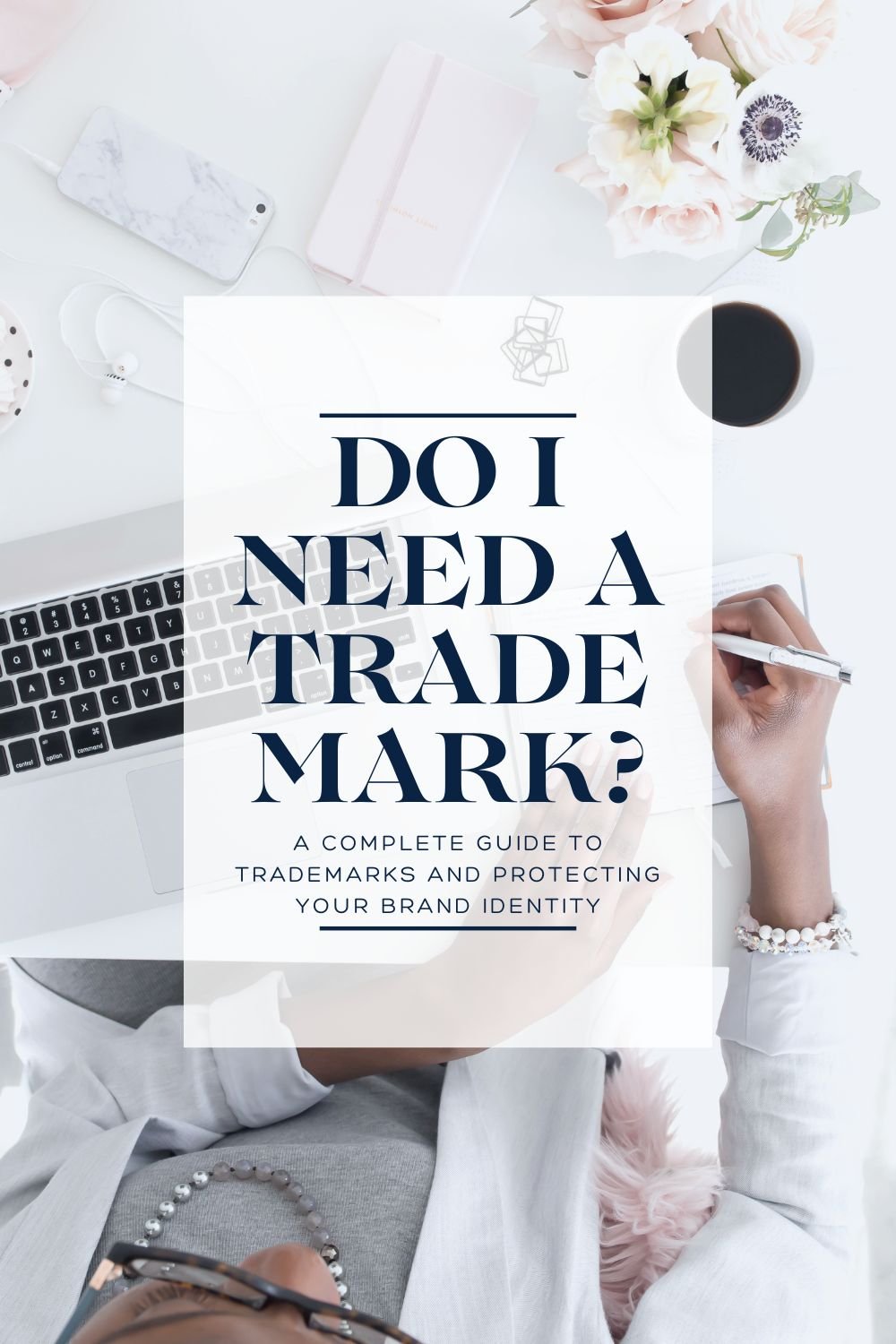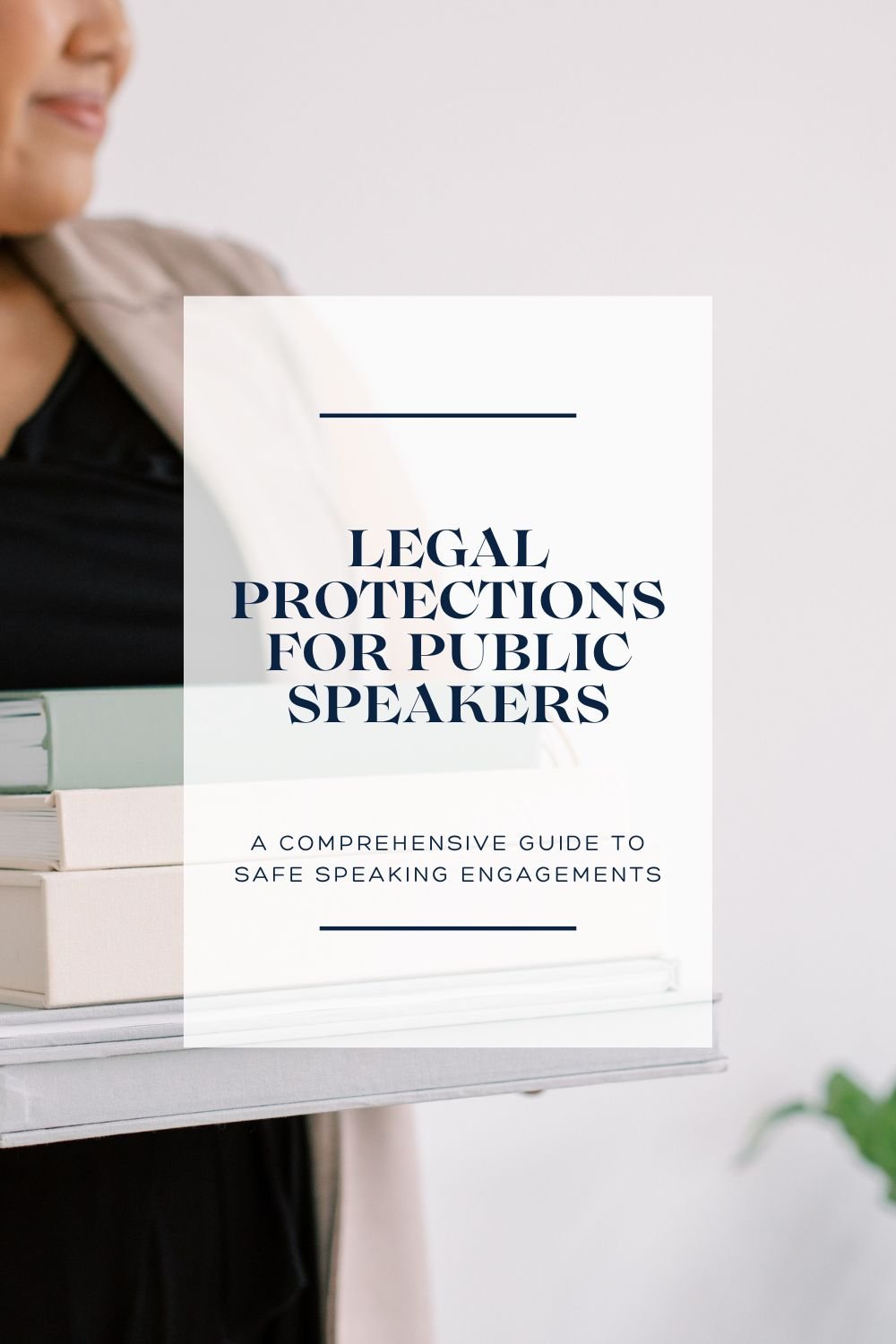Why Your Business Should Register a Trademark: The Comprehensive Guide to Protecting Your Brand's Identity
Hi there, dreamers & dynamos,
Welcome to Trademarks 101.
Why Your Business Should Register a Trademark
Is it me or does registering a trademark just “feel” like one of those things that you “should” do in your business?
But, if you’re anything like most people, are you kinda-sorta wondering what a trademark actually is?
I got you! This comprehensive guide to protecting your brand identity will not only answer why your business should register a trademark, but explain what one is, what it protects, and how to go about registering.
Ready? Ready!
In today's competitive marketplace, standing out and securing your brand's identity is more crucial than ever. At the heart of this endeavor lies the concept of trademarks. But what exactly is a trademark, and why should businesses consider registering one?
Understanding Trademarks
A trademark, at its core, is a symbol, design, word, phrase, or a combination of these elements, used to identify and distinguish the goods/services of one seller or provider from others. It’s meant to differentiate your company from other businesses and help customers distinguish the source of a product or service. Think of it as a brand's unique fingerprint in the market. Trademarks offer a decade-long protection period and, good news, they can be renewed!
Three Cornerstone Reasons for Trademark Registration
1.To Protect Brand Value and Integrity:
Your brand is the essence of your business identity. A registered trademark does more than just give legal rights—it distinguishes your brand from a sea of similar entities. Imagine launching a unique product only to find multiple businesses with eerily similar names popping up. The uniqueness of your brand could be diluted which devalues your hardwork and creative efforts. With a registered trademark, you ensure that your brand remains unmistakable in your domain and that your customers will not become confused.
2. Creation of a Valuable Business Asset:
Beyond the obvious legal advantages, trademarks are valuable assets. Like property, trademarks can be bought, sold, or leased. However, the value isn't just monetary. The reputation and goodwill associated with a trademarked brand are immeasurable. Over time, as your business grows and establishes a reputation, your trademark exponentially increases in value.
3. A Robust Legal Shield:
Ever heard of copycat businesses or faced intellectual property theft? With a trademark in place, your business can move beyond mere warnings, sending cease and desist letters or DMCA take-down notices, to actively seeking legal redress through the courts. It empowers you with tools stronger than just cease & desist letters—it offers a legal avenue to ensure your brand's identity remains protected.
The Breadth of Trademark Protection
When we say trademark, most people think of logos or company names. While accurate, it's just the tip of the iceberg. Given its role as a source signal, trademarks encompass a broad range, including logos, taglines, and even unique colors associated with a brand. The primary aim? Curtailing brand confusion. This protection ensures that consumers aren't misled by similar-sounding or looking brands while also shielding your business from undue imitation.
Love This Info? Check Out Related Articles:
Navigating the Trademark Registration Process
All trademark registrations in the U.S. are handled through the United States Patent and Trademark Office (USPTO). While it might seem daunting, the process is quite methodical.
Determine What Can Be Trademarked:
The essence of trademarking lies in its source-signaling capacity. Thus, you can trademark words, symbols, taglines, or even certain designs—anything that signifies your brand.
Decide When to Trademark:
Not every brand element needs trademarking right away. If you're still testing waters with a product name or unsure about a logo's permanence, it's wiser to hold off. If your business is young, it may be wiser to hold off and make sure your name or tagline reflects your actual scope of services and resonates with your ideal clients. However, once you're steadfast about your brand's direction, it's time to roll up those sleeves and get the ball rolling - don’t wait once you know what you want to more forward with.
Trademark Clearance Search:
Before filing, ensure that your desired trademark isn't already in use or eerily similar to existing ones. This goes beyond a mere Google search—dig deep to check for "confusingly similar" trademarks as well.
The Trademark Search Process: A Deep Dive
Trademark searches are an essential preliminary step before filing for a trademark. It's a lot more than just a cursory glance over databases. In the realm of trademark registration, the search process, while seemingly cumbersome, is a necessary precaution. It's akin to laying the groundwork for a building - solid, thorough, and indicative of the structure's future integrity. By understanding and respecting this process, businesses can ensure they embark on the trademark journey with confidence and clarity.
Here's a detailed breakdown of why and how to execute a meticulous trademark search.
Purpose of the Trademark Search
The goal behind conducting a trademark search is to identify any existing trademarks that could be "confusingly similar" to the one you wish to register. This isn't restricted to exact matches; it includes any name, logo, or phrase that could be remotely similar and, therefore, could cause confusion in the market.
Step-by-step Process of Trademark Search
Identify Key Elements of Your Trademark:
Before beginning the search, isolate the crucial components of your desired trademark. This could be a word, design element, logo, or a combination.
Use Online Databases:
Start with the United States Patent and Trademark Office's (USPTO) online database. The Trademark Electronic Search System (TESS) allows you to search for registered trademarks and prior pending applications, providing an overview of potential similarities.
Broaden Your Search Criteria:
It's vital to not just search for your exact trademark, but also variations. This includes phonetic similarities, spelling variations, or even translations if applicable. For example, if you're looking to trademark 'SunBrite', search for 'SonBright' or 'SunBryte' as well.
Consider Goods and Services Classification:
The USPTO classifies trademarks into various classes, each representing different types of goods or services. While your brand name might already be trademarked under one class, you might be free to use it under another, provided there's no scope for confusion between the two sectors. An example is Delta faucets which are a completely different category, and unlikely to be confused with Delta Airlines.
Look Beyond the USPTO:
Extend your search to state trademark databases and even business directories. Sometimes, businesses might be operating under a particular name without having registered it as a trademark at the federal level.
International Trademark Databases:
If you're considering doing business internationally, it's wise to search international databases. The World Intellectual Property Organization (WIPO) offers a global brand database, making this task more straightforward.
Engage Professionals:
Given the complexity and the stakes involved, many businesses opt to hire professionals who specialize in trademark searches. They bring experience, a set of refined tools, and a keen eye for potential conflicts, ensuring the search is exhaustive and accurate.
Post-Search Actions
Once you've conducted the search:
No Conflicts: If there are no potential conflicts, you're in a stronger position to proceed with the registration.
Identify Conflicts: If you do find potential conflicts, consider how significant they are. If they are direct conflicts in the same business sector, it might be prudent to reconsider your trademark.
Filing the Application:
With your clearance in place, move to the application process. Here, you'll declare whether your trademark is "in use" or you have an "intent to use" (for those planning to use it soon. This category will give you 6 months of protection).
Description:
Be meticulous in describing your trademark's use. Don't be vague—details matter! Depending on your business type, you'll also need to select from one of USPTO's 45 classes that best align with your operations.
Proof of Use:
This is where you showcase your trademark in action. Whether it's a logo on your product or a tagline on your website, these proofs cement your claim.
The trademark registration process is, admittedly, not a sprint but a marathon. Awaiting approval might stretch from ten months to even longer. Yet, when it comes to brand identity and protection, isn't it worth the wait?
Still not sure if the effort is worth it? Let’s explore additional benefits.
Delving Deeper: The Unspoken Benefits of Trademarking
While we've highlighted the primary reasons and processes behind trademarking, it's crucial to understand its deeper, often unspoken benefits.
Boosted Consumer Confidence
In an age rife with counterfeits and fly-by-night operations, a registered trademark acts as a beacon of trust. For consumers, it's an assurance that they're dealing with a genuine brand, leading to increased brand loyalty. Essentially, your trademark acts as a silent yet formidable brand ambassador, reassuring customers about the authenticity of your offerings.
Leverage in Business Deals
Beyond its legal and consumer-oriented benefits, a trademark can significantly enhance a brand's negotiation power in business dealings. Whether you're looking to franchise your business, secure investments, or enter into partnerships, owning a registered trademark showcases commitment, seriousness, and foresight, making your business an attractive proposition.
Global Reach and Protection
With the possibility of international trademark registration, businesses can ensure brand protection on a global scale. As businesses expand across borders, having a trademark that's recognized internationally becomes pivotal. It paves the way for seamless global expansions, ensuring brand integrity remains consistent worldwide.
Deterrent for Potential Infringers
The mere presence of a registered trademark can deter potential copycats. The knowledge that a business has a legal stronghold over its brand identity elements often dissuades infringers and helps avoid messy legal fights.
Economical in the Long Run
While the initial investment in trademark registration might seem steep, its long-term benefits far outweigh the costs. Considering the legal battles, rebranding efforts, and lost business due to brand confusion or infringement, the cost of registration is a prudent investment.
Reflects Brand Evolution
Over time, brands evolve. They adapt, change, and grow. The process of re-registration or updating a trademark allows businesses to ensure their trademarks align with their current brand image and values, ensuring relevancy in a dynamic market.
In Conclusion:
In the vast arena of business, trademarks protect your identity and ensure that you stand out. The process might seem tedious, but the rewards—brand uniqueness, legal protection, and unparalleled market presence—are priceless. So, as you scale your business, ensure your brand's essence remains undiluted and unmistakably yours with a trademark.
THIS ARTICLE IS NOT A SUBSTITUTE FOR LEGAL ADVICE AND IS OFFERED FOR INFORMATIONAL PURPOSES ONLY. EVERY SITUATION IS UNIQUE AND YOU SHOULD CONSULT A LOCAL ATTORNEY FOR ADVICE ON YOUR PARTICULAR CIRCUMSTANCES.





Dive deep into US trademark law tailored for small businesses! Learn the differences between trademarks, patents, and copyrights, and why a domain name isn't enough. Explore the intricate process of trademark searches, and ensure your brand stands out and remains protected. Knowledge is power – empower your business journey!